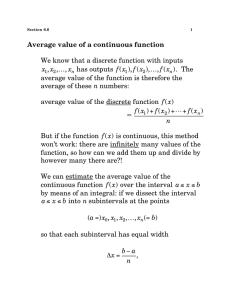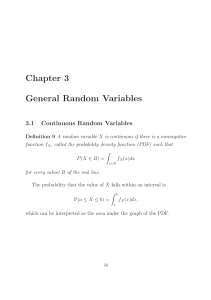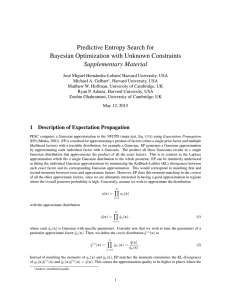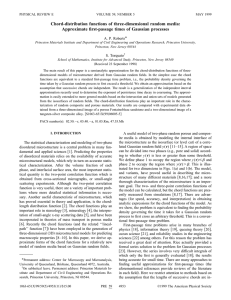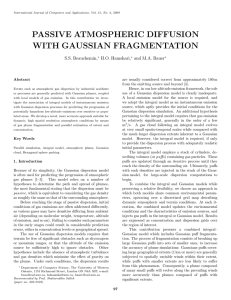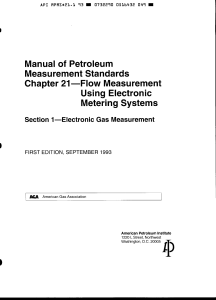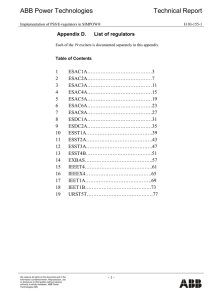Tutorial Note #3 - SHF Communication Technologies AG
advertisement
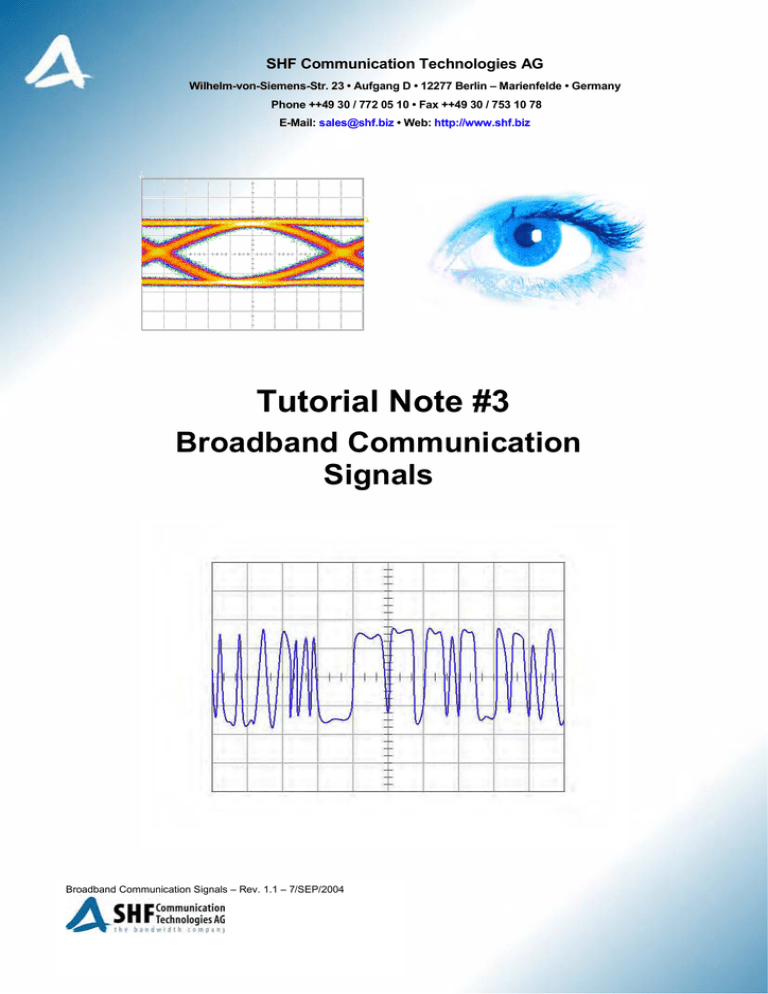
! " * # $ " %!!&& ++,- . / &&! .0 %. " 3( 4 5 # 6" '( # 1 ++,- . / &0 %. &2 4 74//888 # 6 " ) ! "# $%& # $% " & ' # $% ( )*)*)*+ % ! , ( # "# $%& .% ( /' 0 ( 1 2 2 3*4 * 3 ! 2 ! # $%. # $%3 % " & ( # $% 5 6 2 . -* 7) 8$ 9 4 # $% 3* # $% : -*3* $ : *7; 7<- =7; $ # $% : # $% 9 7) 8$ 9 : >-!=? 5 % : *9 # $% : *<!=- @ - ( # $% 8 2 1 7) 8$ 9 ! *) 8$ 9 2 # $% 2 2 # $% A # $% ! ! " 3 # $% 2 & 2 ! 2 3 B 7 ! ( ! ' ! ! , @ ( # $% ( ! ! . C ! , ( ! . 2 ( > Continuous random variables (like voltage or current) have the probability that their value lies within the interval x…x+dx according to their probability density function. A very common distribution of the probability density function is the Gaussian distribution: ϕ (λ ) = 1 σ 2π ⋅e − Φ (λ ) Î λ2 Ó 2 where: λ = (x − µ) σ ϕ (λ ) =Probability Density Function µ σ = Mean Value = Standard Deviation The integral of the Gaussian distribution gives the probability that x is smaller than a certain threshold x0 .This function is also called the Error Function: λ Φ (λ ) = erf (λ ) = ∫ ϕ (t )dt −∞ As this integral can only be solved by approximation or numerically there are tables for the error function. The probability that the sample is within a certain interval is: Interval ± 1σ ± 2σ ± 3σ | | | | | ϕ (λ ) Probability 68.27% 95.45% 99.73% 6 M3 1 . ! ! M3 ! . ! N O ! 3 ( 3 "$C & @ $C P "2& : *3 "2&Q 2 2 $C 8 ; % , ! . " & , .O G% , ( O ( O G% *I =I 4O 3 "?? ??????;L & , ! ( , "0N & , , . O 0N : R "O O % & < ! ))(@ ( $ ! *)3* ( . <) $C *)) > 9 . ! ( # $% $C ( 7) 8$ 9 . 3* *) 7 *)) B . !( # $% ( " & $C ? $C $C M # $% M M . M ' ( 2 . , *)


